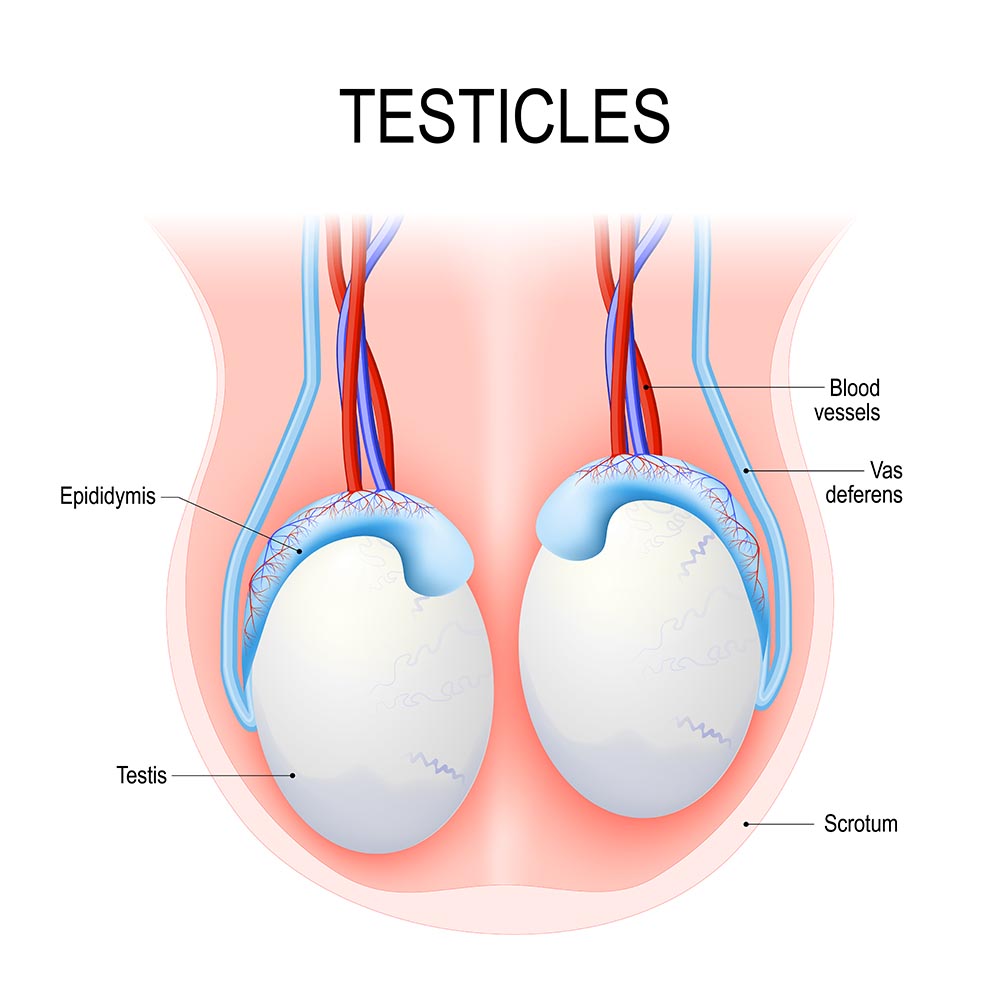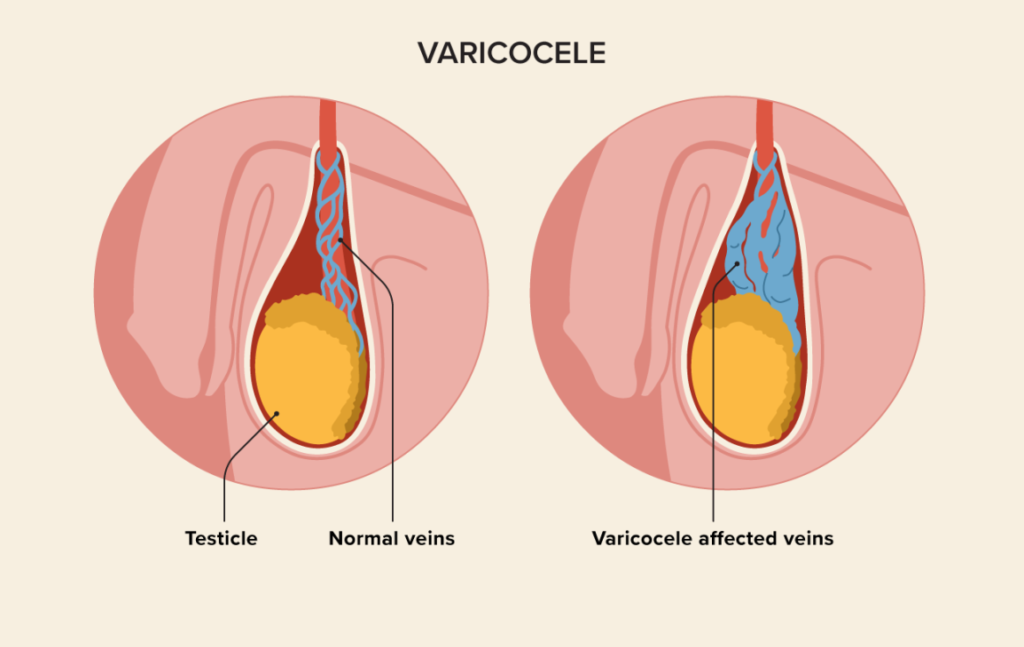I. Introduction
Definition of Scrotal swelling
Scrotal swelling refers to an abnormal increase in the size of the scrotum. The severity of the condition varies, and it may affect one or both sides of the scrotum. Edema may have a variety of causes, such as infection, inflammation, injury, or a pre-existing medical condition. Scrotal enlargement is a common problem that may affect anybody at any age.
Importance of seeking medical attention
It’s crucial to consult a doctor so that you can get a proper diagnosis, start treatment right away, and get expert advice. Health problems are detected early, accurate diagnoses are made by medical personnel, patients have ready access to effective treatments and management plans, and seasoned specialists provide advice on wellness maintenance and preventive care. In general, seeing a doctor regularly is an essential step in preserving one’s health and well-being.
II. Types of Scrotal Swelling
Swollen scrotum
An enlarged or puffy scrotal sac characterises a swollen scrotum. Causes include fluid buildup, inflammation, infection, trauma, or a pre-existing medical condition like hydrocele or inguinal hernia. Pain, heaviness, and other unpleasant sensations may accompany a scrotum expansion.
Testicular swelling
Enlargement of one or both testicles is what we mean when we talk about testicular swelling. Testicular torsion, testicular cancer, and testicular inflammation (orchitis and epididymitis) are all possible causes. Changes in testicular texture, discomfort, or soreness are common side effects of testicular enlargement.
Painless scrotal swelling
Painless scrotal swelling is an enlargement or thickening of the scrotum that is not accompanied by pain or distress. It may be caused by hydrocele, spermatocele, or varicocele. Asymptomatic scrotal enlargement may be observed inadvertently or during routine self-examination.
Varicocele
When blood veins in the scrotum swell and dilate, a condition known as varicocele develops. Varicose veins form when the veins’ valves do not work correctly, allowing blood to pool and the veins to grow. The left side of the scrotum is the most common location for varicoceles, which may be painful or heavy. It has been linked to sperm count decline and male infertility in certain situations.
III. Causes of Scrotal Swelling
Scrotal enlargement may be caused by a number of different things, including:
Infection
Scrotal enlargement is often the result of an infection, most often epididymitis or orchitis. These infections, often brought on by bacteria or viruses, may cause discomfort, redness, and a rise in body temperature in the scrotum.
Injury or trauma
Infections such as epididymitis or orchitis can cause scrotal enlargement. Commonly caused by bacteria or viruses, these infections can cause pain, erythema, and temperature in the scrotum.
Hernia
When an internal organ or tissue protrudes via weakened abdominal muscles, it is called a hernia. Scrotal enlargement, protrusion, or soreness may be the consequence of an inguinal hernia testicular swelling, in which a section of the intestine protrudes into the inguinal canal.
Varicocele
An enlarged scrotum varicocele is a medical condition. They arise when blood flow is blocked in the veins leading away from the testicles, causing the scrotum to swell.
Testicular torsion
Torsion of the testis occurs when the spermatic cord twists and cuts off the blood supply. The sudden onset of intense scrotal pain and swelling might signal a medical emergency.
Cancer
Scrotal enlargement due to testicular cancer is unusual but does occur. In addition to other symptoms like stiffness, weight, or discomfort, a non-painful tumour or mass may develop in the testicle.
Hydrocele
Scrotal enlargement is caused by a hydrocele, which is an accumulation of fluid surrounding the testicle. Usually, there are no symptoms, although sometimes people feel weight or pain.
 IV. Diagnosis of Scrotal Swelling
IV. Diagnosis of Scrotal Swelling
Medical professionals often use the following diagnostic tests to identify the root cause of scrotal enlargement:
Medical history
The healthcare professional will take a complete medical history, asking questions about the beginning of scrotal enlargement, how long it has lasted, any symptoms it has been accompanied by, and any relevant injuries or illnesses the patient has had in the past. This makes it easier to understand the context and pinpoint possible reasons for scrotal swelling.
Physical examination
The scrotum and its surrounding areas will be subjected to a thorough physical examination. The healthcare provider will visually inspect the scrotum for signs of scrotum edema, erythema, or anomalies in size, shape, or texture. A mild examination of the scrotum may be performed to check for discomfort, lumps, or other abnormalities. Hernias and other problems related to the inguinal area, abdomen, and groin may also be checked.
Ultrasound and color Doppler
Ultrasound imaging and Color Doppler are often used non-invasive diagnostic tools for assessing scrotal hypertrophy. High-resolution pictures of the male reproductive system (scrotum, genitalia, epididymis, and surrounding tissues) are included. Hydroceles, tumors, and varicoceles are just a few of the anomalies that may be seen with the use of ultrasound. In addition to regular ultrasound, color Doppler ultrasonography is often used to evaluate blood flow and spot any vascular anomalies.
V. Treatment of Scrotal Swelling
When it comes to treating scrotal swelling, there are several options available. For cases of minimally invasive treatment, varicocele embolization using coils or glue is a common approach. This procedure involves blocking off the abnormal veins causing the swelling, thereby reducing the symptoms and improving overall scrotal health. In more severe cases, surgery may be required to remove or repair the affected veins.
VI. Varicocele Treatment Available in Jaipur
When seeking varicocele treatment available in Jaipur, it is crucial to choose the right interventional radiologist. Interventional radiologists are medical specialists who use minimally invasive techniques to diagnose and treat various conditions, including varicoceles. Their expertise in performing procedures like varicocele embolization ensures a high level of precision and safety.
Choosing the right interventional radiologist is of utmost importance when seeking varicocele treatment. A skilled and experienced interventional radiologist can significantly impact the success and safety of the procedure. They have in-depth knowledge of the latest techniques and technologies, ensuring the best possible outcome for the patient.
In the realm of varicocele treatment in Jaipur, Dr. Rajendra Bansal stands out as one of the best interventional radiologists for varicocele treatment. With his vast experience and expertise in this field, Dr. Bansal has successfully performed numerous varicocele embolization procedures. His commitment to patient care, coupled with his advanced skills, make him a highly recommended choice for individuals seeking varicocele treatment in Jaipur.
VII. Prevention of Scrotal Swelling
While treatment options exist for scrotal swelling, it is always better to prevent the condition whenever possible.
- Proper hygiene: Maintaining good hygiene in the genital area helps prevent infections and reduces the risk of scrotal swelling.
- Avoiding injuries: Taking precautions to avoid injuries to the scrotum, such as wearing protective gear during sports or activities that may pose a risk, can help prevent swelling.
- Using protection during sexual activity: Using condoms or other forms of protection during sexual activity can reduce the risk of sexually transmitted infections that could lead to scrotal swelling.
By following these preventive measures, individuals can minimize the likelihood of scrotal swelling and maintain good scrotal health.
VIII. Conclusion
In conclusion, scrotal enlargement requires prompt medical attention, particularly in the case of varicocele. A timely diagnosis and treatment plan may slow the advancement of the illness, minimise symptoms, and lessen the likelihood of consequences.
Embolization with coils or adhesive patches are two examples of less invasive treatments for varicoceles. When compared to traditional surgical techniques, they have been shown to be successful while also requiring a quicker recovery time and fewer hazards. Immediate medical care and examination of the minimal invasive treatment alternatives may improve scrotal health and increase the likelihood of a positive outcome.
Scrotal edema may be easily prevented, diagnosed, and treated if regular medical checkups and consultations are prioritised. People that do this benefit from the increased effectiveness of therapy and better health outcomes.




